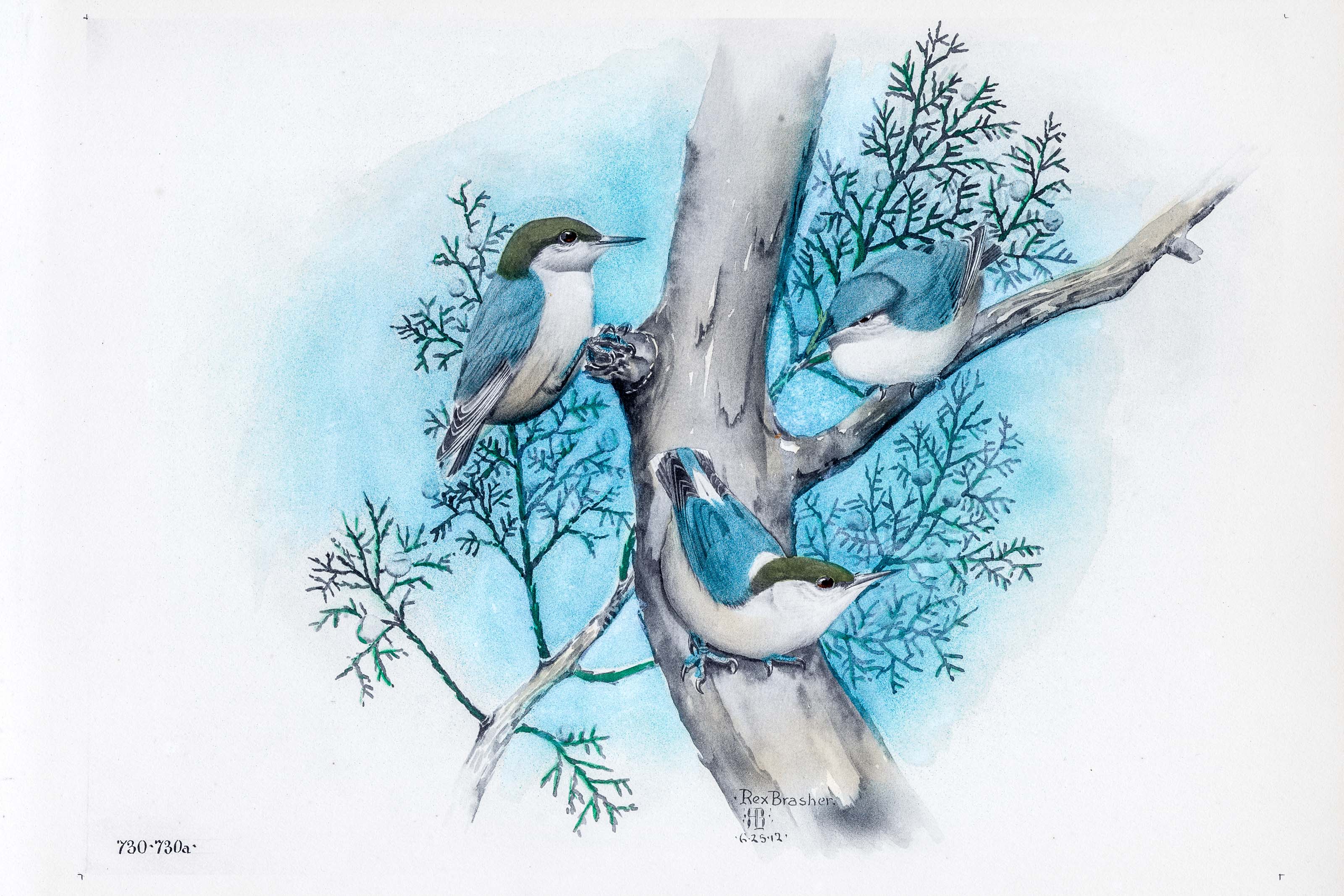
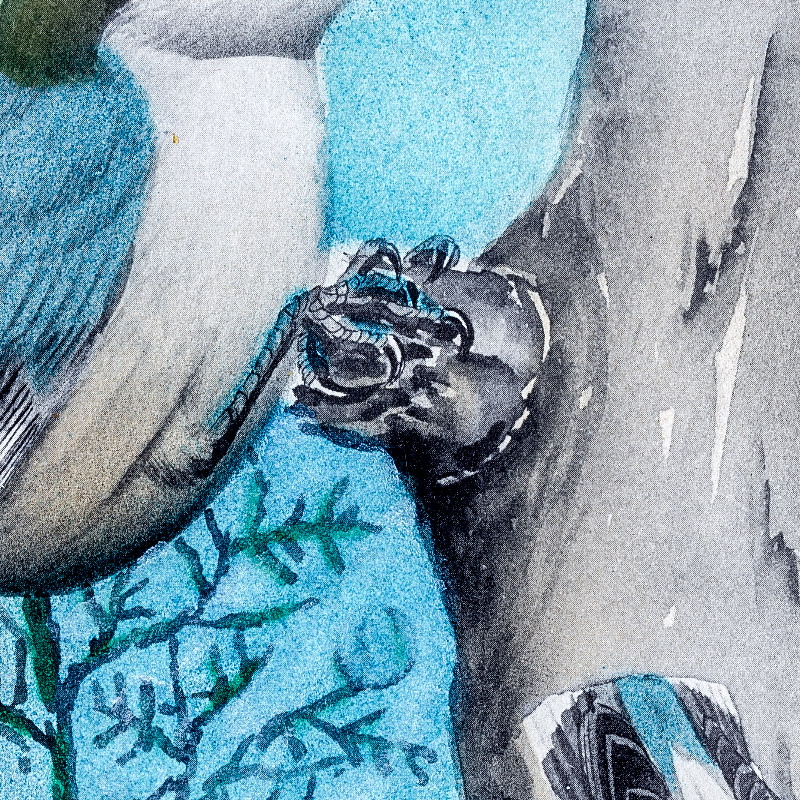
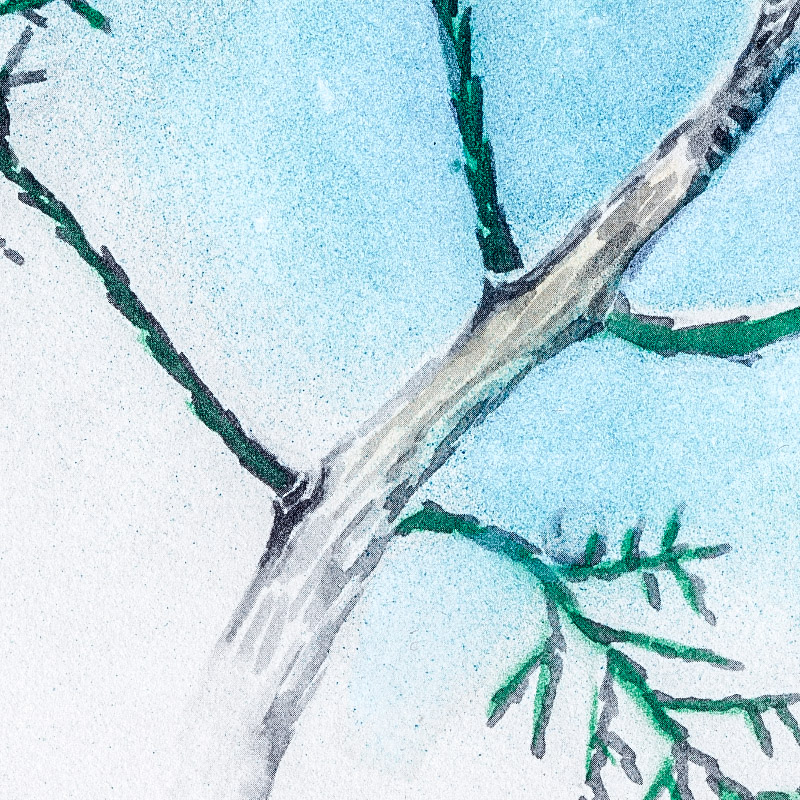
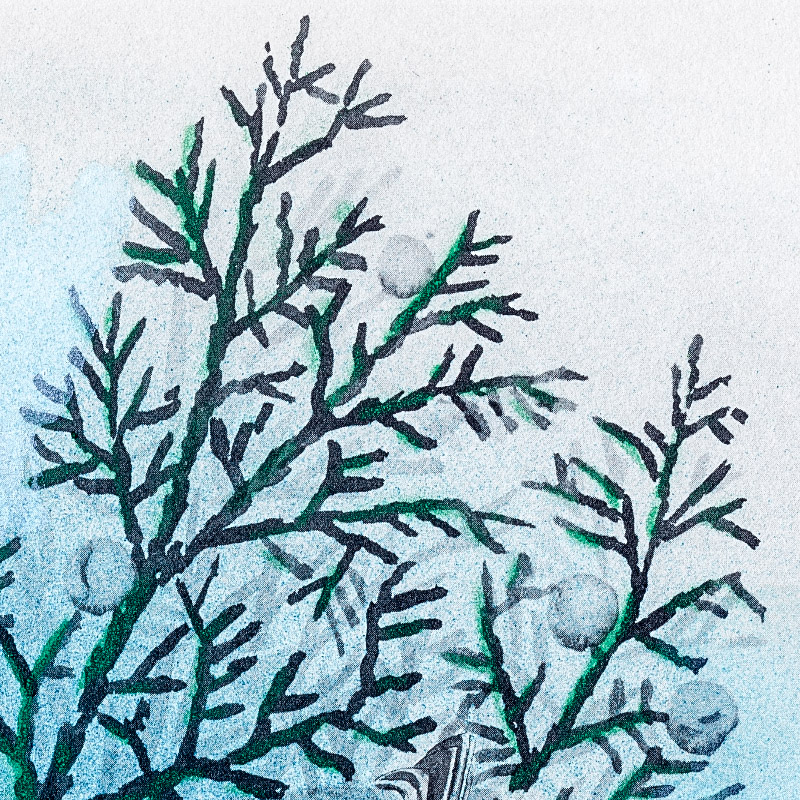
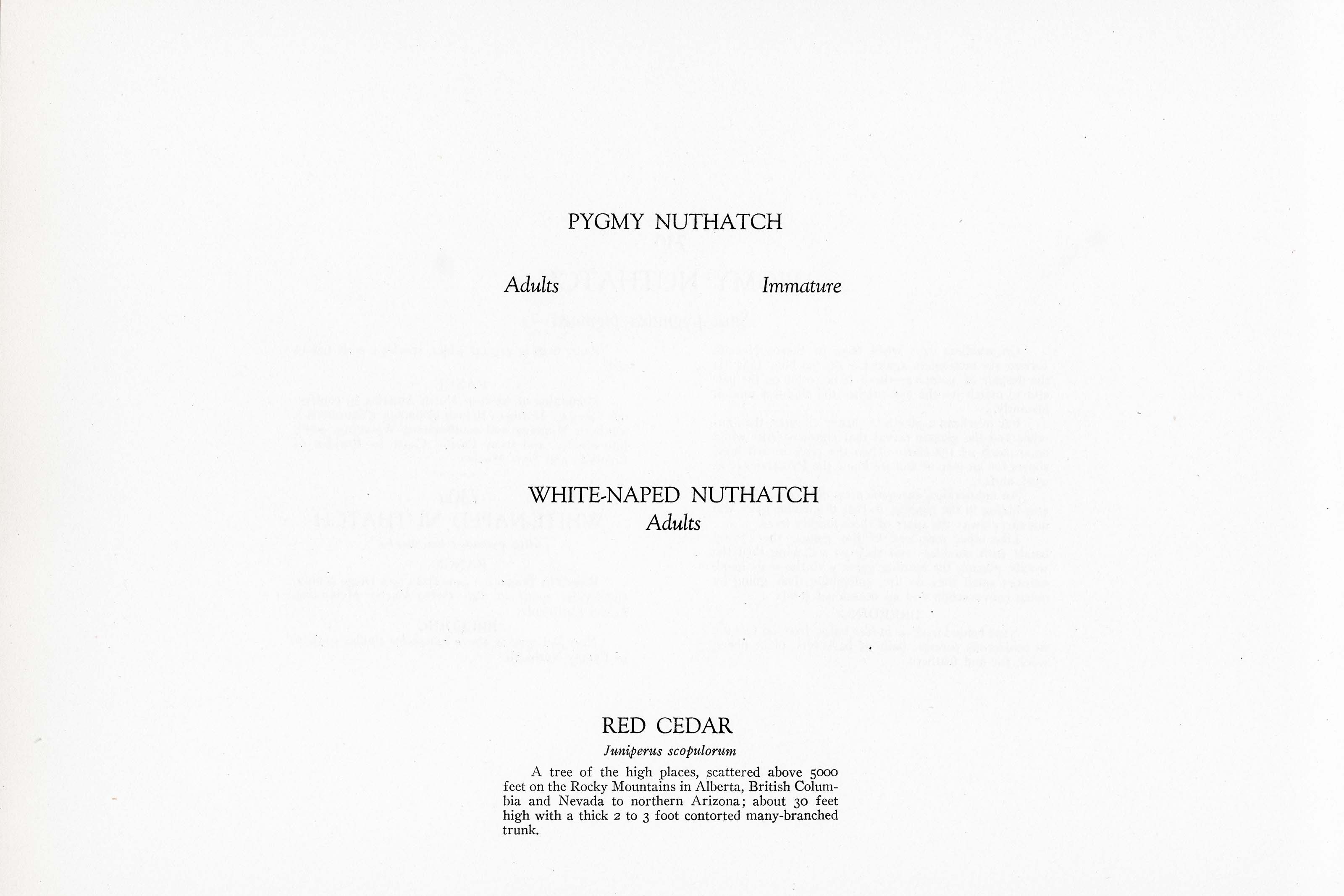
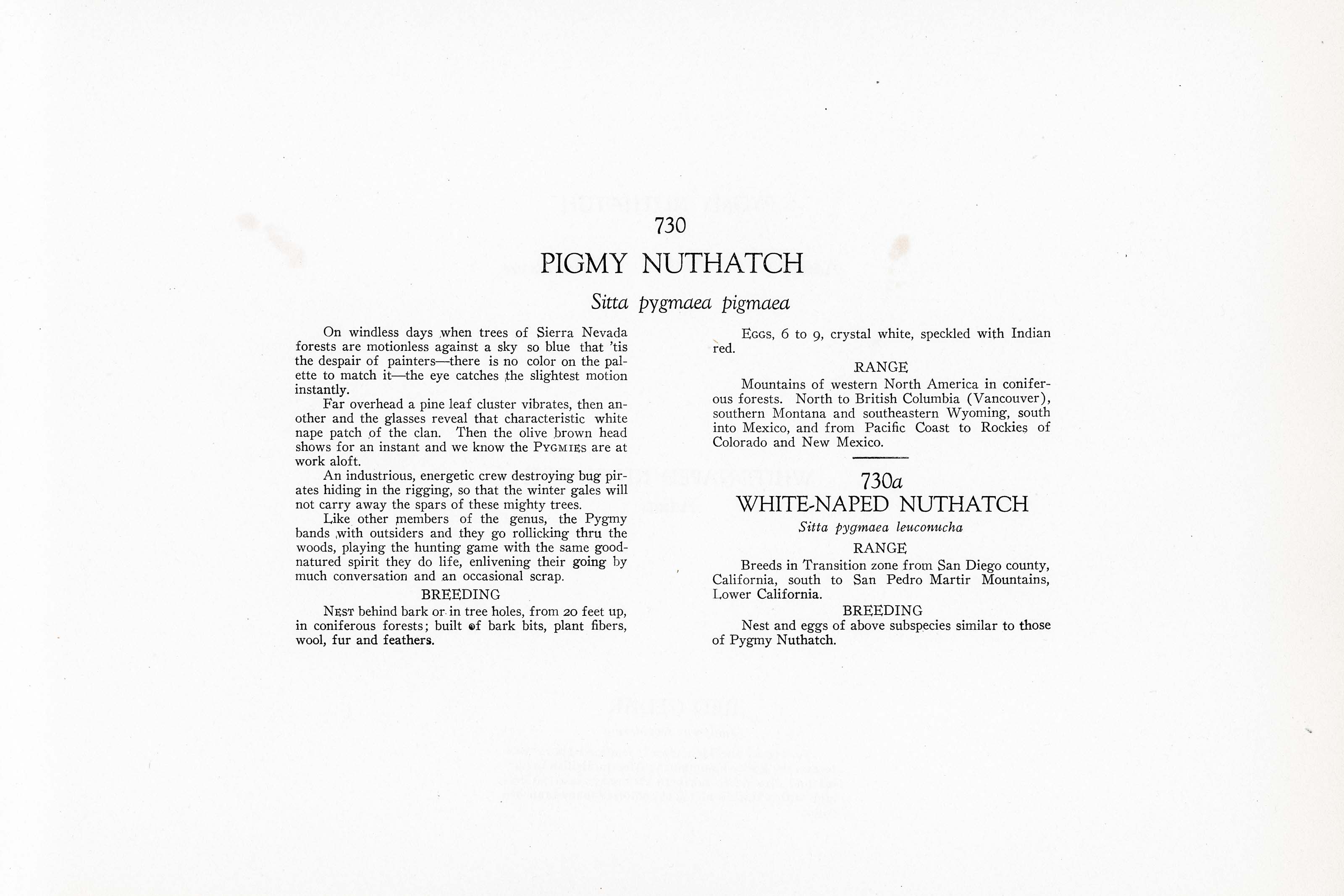

1912
1929
12
730-730a
A team of dedicated board members, volunteers, and student interns has published every page in Volume 9. This volume includes 360 images of paintings and lyrical descriptions of birds, now available online for everyone to enjoy anywhere in the world. This is a monumental task. Each volume requires approximately 400 hours to photograph, edit, transcribe, catalog, and publish online. We need your support to complete this work.
If you're tech-savvy, have a good eye, are meticulous with details, and love structured data, please consider volunteering by emailing us at hello@rexbrasher.org.
We encourage all bird lovers and supporters to consider a monetary donation to support our mission to make Rex's work available for everyone. You can provide a one-time or recurring donation online.
On windless days when trees of Sierra Nevada forests are motionless against a sky so blue that 'tis the despair of painters — there is no color on the palette to match it — the eye catches the slightest motion instantly.
Far overhead a pine leaf cluster vibrates, then another and the glasses reveal that characteristic white nape patch of the clan. Then the olive brown head shows for an instant and we know the PYGMIES are at work aloft.
An industrious, energetic crew destroying bug pirates hiding in the rigging, so that the winter gales will not carry away the spars of these mighty trees.
Like other members of the genus, the Pygmy bands with outsiders and they go rollicking thru the woods, playing the hunting game with the same goodnatured spirit they do life, enlivening their going by much conversation and an occasional scrap.
NEST behind bark or in tree holes, from 20 feet up, in coniferous forests; built of bark bits, plant fibers, wool, fur and feathers.
EGGS, 6 to 9, crystal white, speckled with Indian red.
Mountains of western North America in coniferous forests. North to British Columbia (Vancouver), southern Montana and southeastern Wyoming, south into Mexico, and from Pacific Coast to Rockies of Colorado and New Mexico.
Nest and eggs of above subspecies similar to those of Pygmy Nuthatch.
Breeds in Transition zone from San Diego county, California, south to San Pedro Martir Mountains, Lower California.
A 20–30-foot tree; distributed on mountians from British Columbia to Texas.